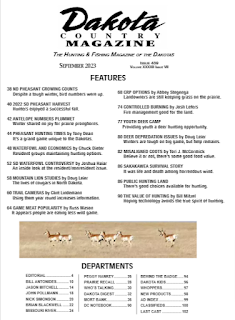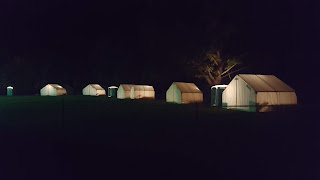This article was published in Dakota Country Magazine. If you want a print or digital magazine subscription or looking to do some advertising click the link. Dakota Country Magazine.
When some people think of trail cameras, they only think of using them during hunting seasons. But for others they use them year-round to learn as much about their game and area as possible through a lens. Of course, laws and regulations are different in every state and make sure to check if there are any limits to how long you can have trail cameras during different seasons.
There are positives to each cellular and regular trail cameras. Having not to disturb hunting habitat to switch cards is a big plus and less intrusive using cellular. You can check cam anytime as long as you have your phone. Using cellular means spending more on data plans from a cell service provider to receive your pics.
Cellular cams can send pics and videos as long as there is a cell signal. To help with connectivity there are also options for extending the antenna on cellular cams. Advantages of cellular include saving time by not having to check and change cards manually. You can change options on the cameras remotely with some cellular cams. You also spend less time and money on gas checking cameras.
Non-cellular cams are more affordable but they have their disadvantages. Regular trail cameras don’t rely on a cellular signal so they can be placed anywhere and take pics without interruption or connectivity of cell service. But with regular cams you need to change SD memory cards every time you want to see what pics have been taken.
There are also options when powering your trail cameras besides regular batteries. Rechargeable batteries save you money while putting fewer batteries in the landfill but these do not typically last as long. Lithium batteries give you the longest battery life and are the most reliable, but the price of lithium can add up quickly. Solar panels are also an option instead of depending on batteries. Solar panel technology has come a long way in the last few years. Of course, this means added expense but it will pay for itself in the long run. As long as you can get consistent rays of sun on the solar panel, this option could work year-round without physically checking the camera.
When setting up trail cameras there are many options depending on what you need in that specific area. Not everywhere has trees or even trees that are straight to hang a camera. Thankfully there are many different mounting bracket options when setting up trail cameras. But sometimes the homemade camera stands work the best. Many people use electric fence posts with adapters to connect to the back of trail cams. These are great for when there isn’t a tree or there isn’t a tree in the right place to get the best angle for the camera.
It also matters which direction to face the camera to get the best results. If possible, facing cameras to the north seems to work the best to avoid sunlight activating the camera. Aiming down a trail also helps get more consistent pics of animals rather than perpendicular to a trail. Avoiding or trimming branches and tallgrass will help avoid getting hundreds of unwanted pics of wind.
There are too many different brands on the market to list here, no matter what kind of trail cam you choose. Everyone seems to have their favorite brand. It will take time to find what brand works the best for you.
Trail cameras are like everything else in the hunting industry, each year there is always something better. But that doesn’t mean you have to go buy it. Find what works for you, stick with it and it will help you be a better hunter and outdoors person.
Some of the most interesting things I have discovered in my years of using trail cams is the random wildlife that visit occasionally without ever seeing them. A few years ago, I captured a fisher on a cam that was located 2 miles from the nearest river.
After running trail cameras for years, you come to realize that even the newest and best cameras don’t catch everything. You can set up two identical cameras side-by-side and one cam will miss taking pics of some movement and the other will capture the movement. But with that said, trail cameras are well worth the money for the info they provide throughout the seasons.



.jpg)



.jpg)


.jpg)












